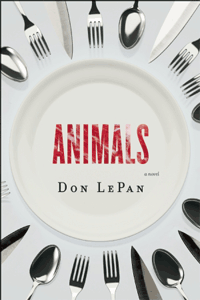Weird society
A letter re: OSPCA protests.
What a weird society. More than 100 protesters want charges laid against the OSCPA for “causing unnecessary suffering, pain and death to the animals under its care.” I wonder how many of those people eat pork coming from those “torture camps” where a female pig lives a life in a cage so small it can’t even turn around or lie down into a comfortable position.
The misery some animals have to endure before they make it to our dinner plates sounds to me like a higher priority on the scale of animal abuse that needs our attention. I would stack a pig’s level of conscientiousness or emotional sophistication right up there with dogs and cats.
I am still a conflicted carnivore. The romantic notion of a hunter bringing down a noble pig that has lived a good life is long gone. But, I wish we could step back a bit from our business model that raises our food animals in such a despicable, horrible environment that squeezes the most profit and productivity without any compassion.
It is amazing to hear about the tears, despair, anger and outrage directed at people trying to humanely manage the lives of certain animals and the deafening silence in response to institutionalized systematic animal abuse.
Russell Pangborn, Keswick
I wrote a letter to The Star that was somewhat similar to Russell’s:
The OSPCA’s response to the ringworm outbreak at its Newmarket shelter is indeed upsetting, but it needs to be seen in context. Every day, shelters across Ontario “euthanize” animals that don’t even have ringworm due to lack of space. Three out of every four cats admitted to the Lincoln County Humane Society, for example, never leave. In 2008, the Kingston Humane Society put down 1092 cats and dogs out of 3000 admitted. And in 2007, Toronto Animal Services killed 55% of the 8991 cats and dogs it took in.
Moreover, every year millions of animals are slaughtered in Canada not because they are ill, and not because we’ve run out of room for them, but because we like the taste of their flesh. These animals are as capable of, and as interested in, living meaningful lives as the animals in our shelters and in our homes. I am not suggesting we throw up our hands at these statistics and our contradictory reactions to them. (Nor am I suggesting the above-mentioned shelters are not doing their best with the resources they have access to.) Rather, I’m suggesting that the news from Newmarket is yet another indication of how important it is that all of us reevaluate our relationships with non-human animals.
Probably I shouldn’t have used the word “flesh”.







